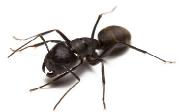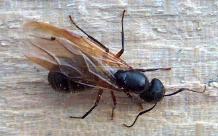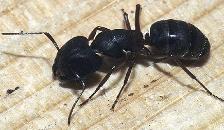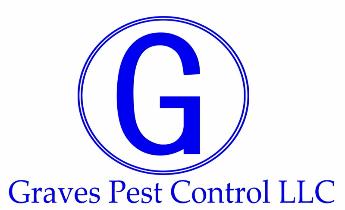


Carpenter Ants
Carpenter ants are one of the most common problems in Massachusetts. Carpenter ants may be
brown, or red, and up to 3/4 of an inch in length. They are often confused with termites and are
considered one of the most difficult pests to control.
Carpenter ants, like termites, produce winged reproductives called swarmers. One way to tell the two
apart is ant swarmers have a pinched waist and pairs of wings that are unequal in length. Ant swarmers
number of any kind of winged ant inside the home is the sign of a problem. An ant colony does not start
producing swarmers (young queens and males) until it contains 2,000 or more workers. It may take
from 3 to 6 years to reach this stage. Observing carpenter ant swarmers in the home is usually the sign
of a mature colony nearby.
brown, or red, and up to 3/4 of an inch in length. They are often confused with termites and are
considered one of the most difficult pests to control.
Carpenter ants, like termites, produce winged reproductives called swarmers. One way to tell the two
apart is ant swarmers have a pinched waist and pairs of wings that are unequal in length. Ant swarmers
number of any kind of winged ant inside the home is the sign of a problem. An ant colony does not start
producing swarmers (young queens and males) until it contains 2,000 or more workers. It may take
from 3 to 6 years to reach this stage. Observing carpenter ant swarmers in the home is usually the sign
of a mature colony nearby.
Unlike termites, carpenter ants do not eat and digest wood but rather excavate galleries and live in
wood. Carpenter ants push the sawdust (called frass) out of the wood as they work to create galleries to
live in.
Carpenter ants are most active at sunrise and sunset as they are nocturnal but may be seen during the
day foraging in large numbers. Carpenter ants feed primarily on sugar solutions from honeydew
producing insects like aphids, tree sap, plant juices, and on sweets and juices from insects they
capture.
Carpenter ants are one of the few types of ants where adult workers can vary in size. A lot of home
owners only huge ants or ants with wings are carpenter ants.
Carpenter ants may sometimes be able to be heard nesting behind walls. The sound has been
described as aluminum foil crinkling or rice krispies popping. This is rare and shouldn't be relied on as
an inspection technique.
Seeing an ant or two during the first warm weeks of the year is not always the sign of a problem however
seeing regular ongoing activity, winged ants, sawdust or trails of ants are likely the signs of a problem
that need treatment. Typically carpenter ants have a parent colony nesting outside in live or dead trees,
landscaping timbers, firewood piles etc. When the colony grows large and needs room to expand
smaller nests called satellite nests are set up. As many as 20 satellite nests can be associated with
one main colony that contains the queen. Satellite nests are usually set up in nearby structures because
the heated protective structures are more conducive for the older stages of ants. It is not uncommon for
a house to have several satellite nests inside.
wood. Carpenter ants push the sawdust (called frass) out of the wood as they work to create galleries to
live in.
Carpenter ants are most active at sunrise and sunset as they are nocturnal but may be seen during the
day foraging in large numbers. Carpenter ants feed primarily on sugar solutions from honeydew
producing insects like aphids, tree sap, plant juices, and on sweets and juices from insects they
capture.
Carpenter ants are one of the few types of ants where adult workers can vary in size. A lot of home
owners only huge ants or ants with wings are carpenter ants.
Carpenter ants may sometimes be able to be heard nesting behind walls. The sound has been
described as aluminum foil crinkling or rice krispies popping. This is rare and shouldn't be relied on as
an inspection technique.
Seeing an ant or two during the first warm weeks of the year is not always the sign of a problem however
seeing regular ongoing activity, winged ants, sawdust or trails of ants are likely the signs of a problem
that need treatment. Typically carpenter ants have a parent colony nesting outside in live or dead trees,
landscaping timbers, firewood piles etc. When the colony grows large and needs room to expand
smaller nests called satellite nests are set up. As many as 20 satellite nests can be associated with
one main colony that contains the queen. Satellite nests are usually set up in nearby structures because
the heated protective structures are more conducive for the older stages of ants. It is not uncommon for
a house to have several satellite nests inside.
We offer both one time treatments and ongoing yearly service plans. If you have a nest in the house you
should go on a service plan to prevent the ants from re-building the nest. You'll just end up with ants
again the following year if you don't. We see it time and time again.
should go on a service plan to prevent the ants from re-building the nest. You'll just end up with ants
again the following year if you don't. We see it time and time again.






(781) 467-8638
(508) 873-7010
(508) 873-7010

